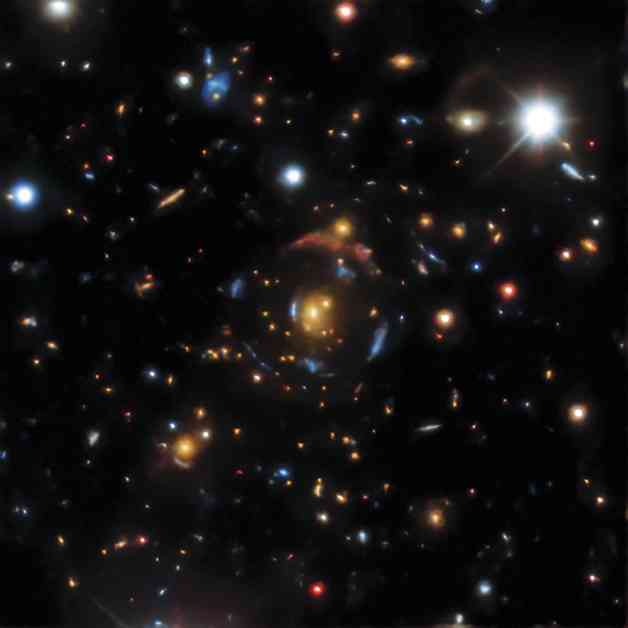An extraordinary discovery in the world of astronomy has given scientists a unique opportunity to peer deep into the universe. A galaxy cluster, known as the Carousel Lens, has created a stunning gravitational lens that magnifies the light from seven background galaxies. This rare alignment allows astronomers to observe these distant galaxies in unprecedented detail.
The gravitational lensing effect occurs when the gravity of a massive object, such as a galaxy cluster, bends the light from objects behind it. In this case, the Carousel Lens is bending the light from seven galaxies located between 7.6 billion and 12 billion light-years away. The magnification created by this phenomenon provides multiple images of six of the seven background galaxies, offering astronomers a chance to study them from different perspectives.
Cosmologist Nathalie Palanque-Delabrouille describes the potential significance of this discovery, noting that if a supernova were to occur in one of the background galaxies, astronomers would have multiple views of the event. This could offer valuable insights into the nature of these cosmic events and the behavior of distant galaxies.
In addition to the exciting observational opportunities presented by the Carousel Lens, scientists are also interested in studying the foreground galaxy cluster itself. By carefully analyzing both the foreground and background galaxies, researchers hope to gain a better understanding of dark matter, dark energy, and the early history of the universe. The discovery of such a distant background galaxy provides a rare glimpse into the universe’s ancient past, offering clues about its formation and evolution.
The use of artificial intelligence played a crucial role in identifying potential gravitational lenses in vast galactic survey images. Subsequent observations with the Hubble Space Telescope confirmed the existence of the Carousel Lens and provided detailed high-resolution images for further analysis. William Sheu, a graduate student involved in the study, suggests that there may be even more magnified background galaxies waiting to be discovered in the data.
Gravitational lensing, a phenomenon predicted by Einstein’s general theory of relativity, has become a powerful tool for astronomers seeking to unravel the mysteries of the cosmos. Tereasa Brainerd, an astronomer not directly involved in the discovery, emphasizes the significance of the Carousel Lens, highlighting the remarkable alignment of the lens and the background galaxies along our line of sight.
Overall, the discovery of the Carousel Lens and its intricate gravitational lensing effects opens up new possibilities for studying distant galaxies and exploring the fundamental questions of the universe. Astronomers are eager to delve deeper into this cosmic wonder and unlock its secrets for the benefit of our understanding of the cosmos.










